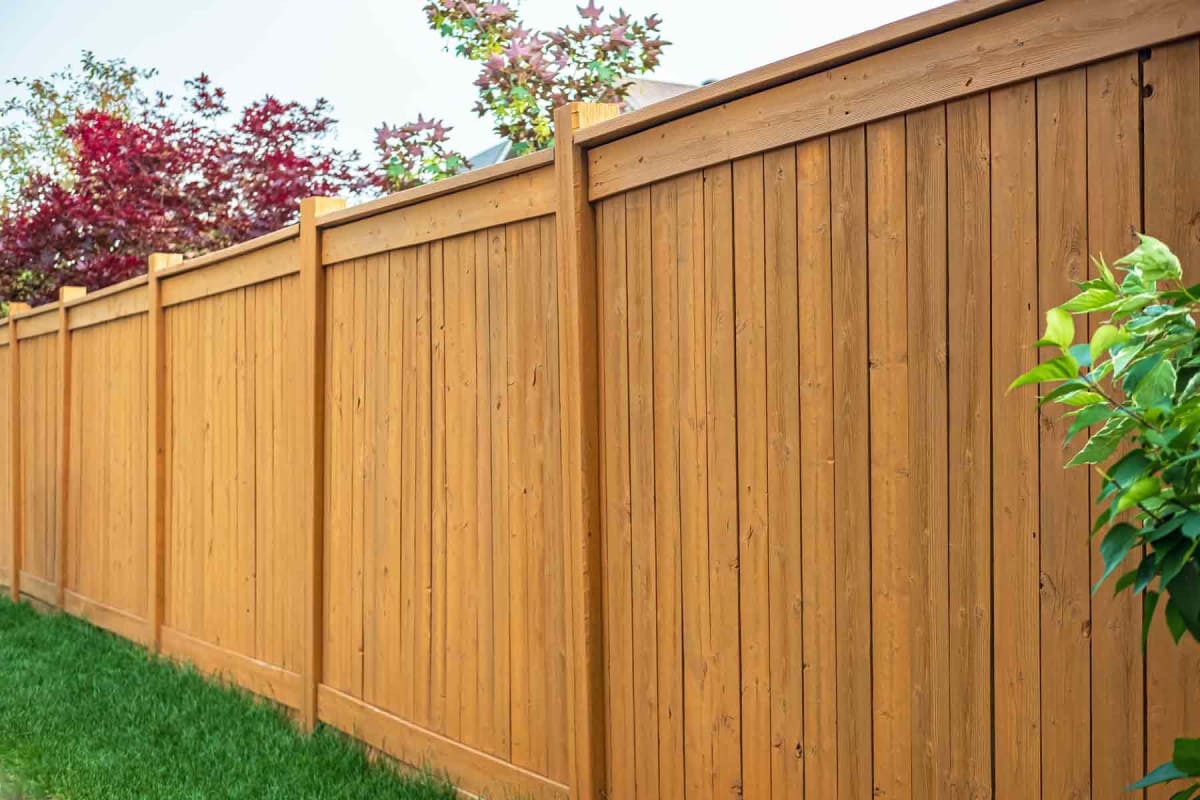All Categories
Featured
Installing a fencing on your residential property can add personal privacy, protection, and aesthetic appeal, but prior to you start digging holes and setting articles, it's important to recognize whether you require an authorization. Not acquiring the necessary licenses might result in penalties or the demand to eliminate the fence.
Why Are Allows Needed for Fence Setup? Licenses are necessary for making certain that your fencing adheres to regional zoning regulations and building ordinance. These guidelines help make sure the safety of your residential or commercial property and the bordering location. Additionally, allows avoid disputes with next-door neighbors or regional authorities, specifically when it involves property lines, elevation constraints, and general layout.
In numerous situations, regional authorities need licenses to regulate things like exposure at junctions or the distance of a fencing to public spaces like roadways or walkways. Authorizations likewise assist guarantee that fencings are mounted properly and securely, especially when it concerns high fences or special materials.
Common Types of Permits for Fencing Installment. The sort of fencing you intend to mount and your area will establish which permits are needed. Here are the most typical kinds:
Building Permit. A building license is typically needed for fencings that surpass specific height limitations (commonly over 6 feet), are situated near a public roadway or walkway, or are made from specific materials. Structure permits make sure that the framework fulfills local building ordinance, consisting of safety standards.
Zoning Permit. Zoning authorizations are often called for to make certain that your fencing follows regional zoning legislations. Zoning legislations can specify where a fence can be put on your building (e.g., along building lines or ahead lawns), in addition to set restrictions on fencing height. These legislations are created to stop blockages that could impact web traffic safety and security or community aesthetics.
![]()
Problem Authorization. In some locations, you might need an obstacle authorization to place your fencing a certain range from residential property utilities, roads, or lines. Problems are planned to preserve appropriate area in between frameworks and building boundaries, lowering prospective problems with next-door neighbors or public infrastructure.
Homeowners Organization (HOA) Approval. You will likely need approval from the HOA before installing a fencing if your home is component of a neighborhood governed by a Homeowners Organization (HOA) HOA standards typically regulate the style, elevation, materials, and even color of fencings, making certain that they match the overall aesthetic of the neighborhood.
The Process for Getting a Fence License. To acquire a fence license, you commonly need to call your local city or region workplace. Most locations have a structure department or preparation workplace where you can obtain authorizations. The process entails finishing an application and giving in-depth information about your proposed fence, including:
Fence layout (products, elevation, design) Location on the building. Property line details (for accurate positioning) In many instances, a site strategy revealing the recommended fence's setting will certainly be required. You might likewise require to pay a license charge, which can differ based on location and the intricacy of the project.
When you submit your application, the local authorities will certainly evaluate it to make sure the fence abides by regional regulations. Depending on your area, you might also require to enable or arrange an examination for a residential property survey.
When Do You Not Need a Permit? In some instances, a permit may not be needed. Commonly, you could not require a license if:
![]()
The fencing is under a certain height (frequently 3-4 feet for front lawns) You're replacing an existing fence with the very same kind and elevation. The fence is short-lived (such as a garden fencing) It's constantly an excellent concept to check with your regional structure or zoning division to validate the demands, as guidelines can differ.
Effects of Not Getting a Permit. In some situations, you might require to re-install the fence according to code, which could be costly and lengthy. Additionally, not adhering to the correct allowing procedure can create troubles with neighbors, particularly if your fencing prolongs beyond your property line or does not fulfill elevation or style requirements.
Conclusion. Prior to installing a fence, make sure you're conscious of the local regulations and whether you require a permit. By getting the correct authorizations, you'll make sure that your fencing is lawfully certified, safe, and free from future issues.
Why Are Allows Needed for Fence Setup? Licenses are necessary for making certain that your fencing adheres to regional zoning regulations and building ordinance. These guidelines help make sure the safety of your residential or commercial property and the bordering location. Additionally, allows avoid disputes with next-door neighbors or regional authorities, specifically when it involves property lines, elevation constraints, and general layout.
In numerous situations, regional authorities need licenses to regulate things like exposure at junctions or the distance of a fencing to public spaces like roadways or walkways. Authorizations likewise assist guarantee that fencings are mounted properly and securely, especially when it concerns high fences or special materials.
Common Types of Permits for Fencing Installment. The sort of fencing you intend to mount and your area will establish which permits are needed. Here are the most typical kinds:
Building Permit. A building license is typically needed for fencings that surpass specific height limitations (commonly over 6 feet), are situated near a public roadway or walkway, or are made from specific materials. Structure permits make sure that the framework fulfills local building ordinance, consisting of safety standards.
Zoning Permit. Zoning authorizations are often called for to make certain that your fencing follows regional zoning legislations. Zoning legislations can specify where a fence can be put on your building (e.g., along building lines or ahead lawns), in addition to set restrictions on fencing height. These legislations are created to stop blockages that could impact web traffic safety and security or community aesthetics.

Problem Authorization. In some locations, you might need an obstacle authorization to place your fencing a certain range from residential property utilities, roads, or lines. Problems are planned to preserve appropriate area in between frameworks and building boundaries, lowering prospective problems with next-door neighbors or public infrastructure.
Homeowners Organization (HOA) Approval. You will likely need approval from the HOA before installing a fencing if your home is component of a neighborhood governed by a Homeowners Organization (HOA) HOA standards typically regulate the style, elevation, materials, and even color of fencings, making certain that they match the overall aesthetic of the neighborhood.
The Process for Getting a Fence License. To acquire a fence license, you commonly need to call your local city or region workplace. Most locations have a structure department or preparation workplace where you can obtain authorizations. The process entails finishing an application and giving in-depth information about your proposed fence, including:
Fence layout (products, elevation, design) Location on the building. Property line details (for accurate positioning) In many instances, a site strategy revealing the recommended fence's setting will certainly be required. You might likewise require to pay a license charge, which can differ based on location and the intricacy of the project.
When you submit your application, the local authorities will certainly evaluate it to make sure the fence abides by regional regulations. Depending on your area, you might also require to enable or arrange an examination for a residential property survey.
When Do You Not Need a Permit? In some instances, a permit may not be needed. Commonly, you could not require a license if:

The fencing is under a certain height (frequently 3-4 feet for front lawns) You're replacing an existing fence with the very same kind and elevation. The fence is short-lived (such as a garden fencing) It's constantly an excellent concept to check with your regional structure or zoning division to validate the demands, as guidelines can differ.
Effects of Not Getting a Permit. In some situations, you might require to re-install the fence according to code, which could be costly and lengthy. Additionally, not adhering to the correct allowing procedure can create troubles with neighbors, particularly if your fencing prolongs beyond your property line or does not fulfill elevation or style requirements.
Conclusion. Prior to installing a fence, make sure you're conscious of the local regulations and whether you require a permit. By getting the correct authorizations, you'll make sure that your fencing is lawfully certified, safe, and free from future issues.
Latest Posts
Trusted Expenses Door Solutions for Residences and Services
Published May 24, 25
1 min read
Discover WyHy FCU – Top Benefits for Your Financial Success
Published May 24, 25
1 min read
Explore Strathmere’s Coastal Treasure: Relax, Savor, and Stay at Deauville Inn
Published May 23, 25
2 min read